My daughter-in-law, Debbie, and I share a love of Crème Brûlée. In fact, many years ago, I believe I promised her that if she would provide grandchildren, I would provide Crème Brûlée on demand. She did, and I do. Always an outstanding baker, Debbie has gone on to develop prodigious cooking skills of her own, and one Christmas turned out 15 servings of Crème Brûlée for us to enjoy, and enjoy, and enjoy!
Valentine’s Day rolls around every year, and so I offer a recipe for Crème Brûlée for Two, for you and your sweetie, or you and yourself. Custard is a wonderful thing, taking on a wide variety of flavors just by steeping a flavor-enhancer in the hot cream, or adding a sprinkle or dribble of something to the custard mix.
One of the advantages of Crème Brûlée is you HAVE to make it at least half a day ahead, so it chills completely (or the custard will melt when you brûlée the sugar). A little experimentation has shown that you can even do the brûlée-ing part up to two hours in advance and still have an excellent crackly shell when you serve it. That leaves you plenty of time to take a bubble bath and light the candles.
Crème Brûlée For Two
Ingredients:
- ¾ cup cream (the higher the fat, the better the result)
- 2 Tbsp sugar
- Pinch of salt
- Flavor option (see below)
- 2 egg yolks
- Extra sugar for brûlée-ing


Flavor Options:
Vanilla is always a good choice, even if you are adding other things. If you have a whole vanilla bean and know how to use it, this is the perfect occasion.
You can add a tablespoon of any kind of liqueur that makes you happy – Frangelico, Amaretto, Grand Marnier — or a few drops of an extract like almond or anise.


You can use brown sugar in the custard for a more caramel flavor. I think brown sugar and a tablespoon of rum would be wonderful, especially with a bit of lime zest.
Ground cinnamon or cardamom or any other spice (Chinese Five-Spice?) can be infused in the hot cream or added to the custard – start small and build up, because you can’t take it back out.
You can add citrus zest (any kind), in strips or grated, to the hot cream and let it sit for about 10 minutes to get a gentle hint of flavor. Leave finely grated zest right in the custard for a stronger flavor – otherwise strain it out. Fresh ginger can be used the same way.
You can steep a teabag in the hot cream for 5 to 10 minutes for, perhaps, Earl Grey-Infused Crème Brûlée. That’s not your only option, though – some of us love the flavor of Red Zinger. If you have a Chai Tea blend, try that!
You can add an ounce or so of grated dark chocolate to the hot cream and whisk until it melts for a chocolaty treat.
Method:
Heat the cream in your microwave until it’s really hot, but not boiling, about a minute and 15 seconds. Alternatively, you can heat it in a small saucepan on the stove. Flavor it as you choose.
Add the sugar and salt, and any additional chosen flavorings to the hot cream, stirring until everything is fully dissolved. This gives the cream a chance to cool down a little. If you used citrus zest or anything else whole, strain it out now.


Add a couple of tablespoons of the warm cream mixture to the egg yolks to temper them (that means to bring up their temperature, without scrambling them).
Add the rest of the cream gradually, stirring all the while. Try to avoid making a lot of foam – use a spoon or rubber spatula to stir, rather than a whisk.


If you want a really smooth, lump-free custard, strain it again. Things like the chalazae (look it up) and the yolk sac from the egg can lump up during the cooking process.

Some people like a deep custard layer, while others want more square inches of caramel on a thinner base, so they choose a dish with more real estate – I have seen Crème Brûlée prepared in a saucer. Whatever dish you choose must be oven-safe – no cracked glass in the custard, please.
Place two ½ cup ramekins or similar dishes on a cloth in a cake pan (it keeps them from sliding around). Divide the custard between the two dishes.


If you seek perfection, take the time to pop the bigger bubbles with a toothpick. A neat trick, if you have a brûlée torch, is to make a quick pass with the flame over the surface, which will pop any bubble that has the nerve to form. Be quick, though, or you’ll brown the custard.


Add boiling water to the cake pan until it comes half-way up the sides of the dishes. This will prevent uneven cooking and brown bottoms. If you choose not to use this “water bath” method, your custard may bubble while it cooks, leaving it looking like Swiss cheese. If you don’t care how the end product looks, well….

Bake in a pre-heated 300°F oven until just set. The edges will be firm-ish, but the centre should still be jiggley – it’ll firm up as the custard cools. Cooking time depends on how deep your ramekins are – small deep vessels take a little longer than shallower ones. My rectangular dishes take 35 minutes. I would suggest you set the timer for 30 minutes, and then check every 5 minutes until you get the desired degree of doneness – the jiggle test is the best way to go.


Let the custards cool for about 20 minutes at room temperature, and then move them to the fridge to chill completely. Do not cover them until they are completely cold, or they may develop a wet surface. If this does happen, blot the custards carefully with a tissue before sugaring them.
To make that crispy sugar crust, there are two rules. The first is that white sugar works better than brown sugar, ‘cause it’s drier. Turbinado sugar (or “Sugar in the Raw”, a large-crystal pale beige product) is ok, if you have it. The second rule is that less is more – too much sugar takes too long to melt, and you may end up with either burned sugar, or a caramelized layer resting on top of an un-caramelized layer, which is not appealing. You need to implement the Goldilocks principle – not too much, and not too little.
Sprinkle sugar onto the top of the custard, shaking to form an even layer and tipping out any excess.


A brûlée torch or small blowtorch does the best job of caramelization – keep the flame moving, and don’t get too close. Stick with it until the sugar is completely melted and quite dark brown, but be alert – burning can happen all too quickly. It’s better to back off if the sugar starts to smoke, and take a second pass later, than to be too aggressive.


If you don’t have a torch, you can caramelize the sugar using your broiler. Pre-heat it well, and set the dishes directly under the brightest part of the electric element or gas flame. Get them as close to the heat source as you can – sometimes it helps to set them on top of an inverted cake pan, for example. Watch them like a hawk!

The one time I tried this in my toaster oven, it took so long to achieve caramelization that the custard melted. The torch is really the better way to go. Get the best one you can afford, and use it as a multi-tasker to toast meringue on lemon tarts, brown up marshmallows for instant s’mores, and apply the perfect bubbly browning on a cheese-topped casserole that you actually heated up in the microwave.
The most delicious thing about Crème Brûlée preceeds the eating – it’s cracking the caramel. Gently “spank” the sugar layer with the back of your dessert spoon, and … dive in! It’s not just for Valentine’s day — with this little recipe, you can treat yourself any day of the year that’s special to you. I plan to stick a birthday candle in mine!





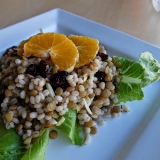
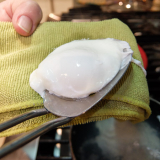
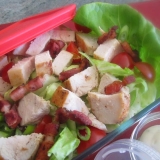
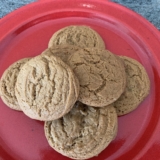
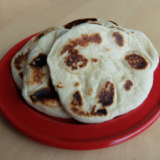
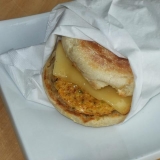
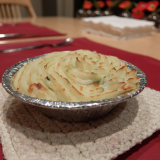
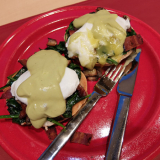
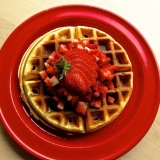
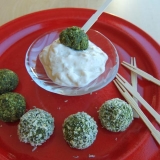
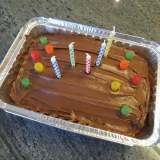
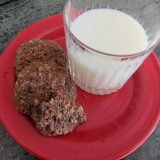
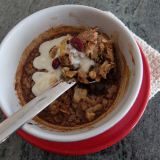
Leave A Comment